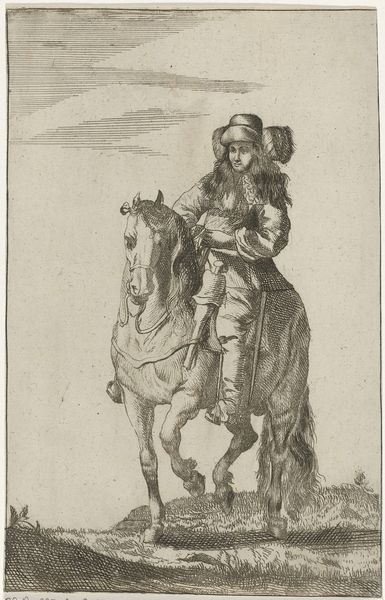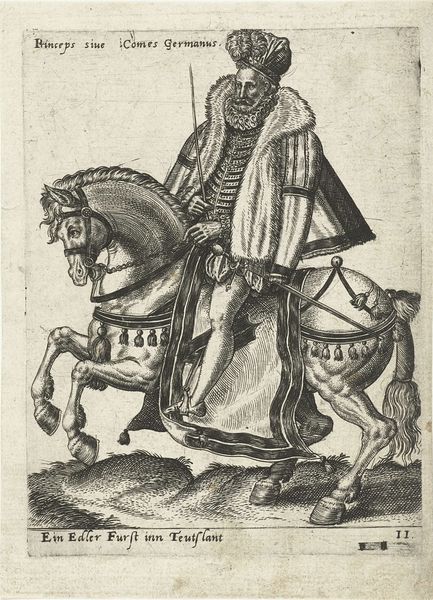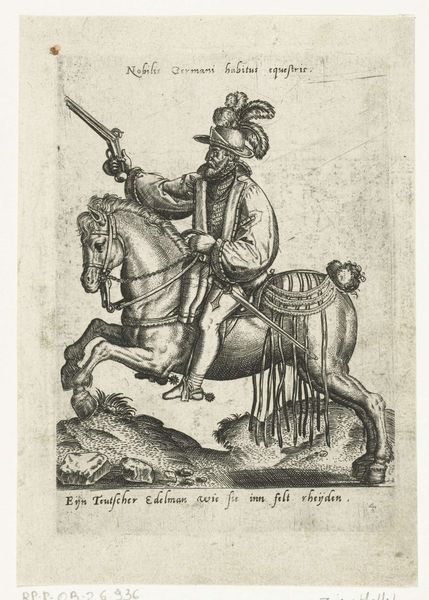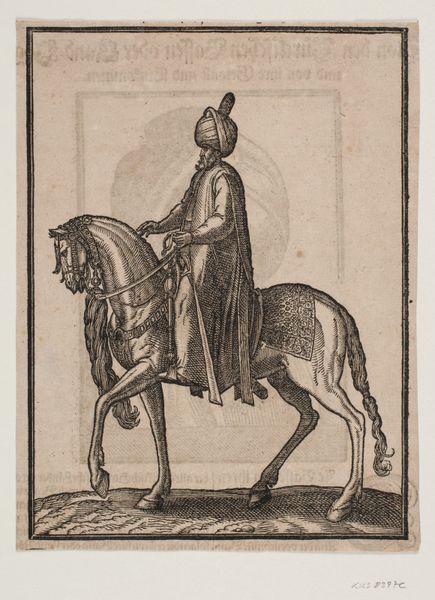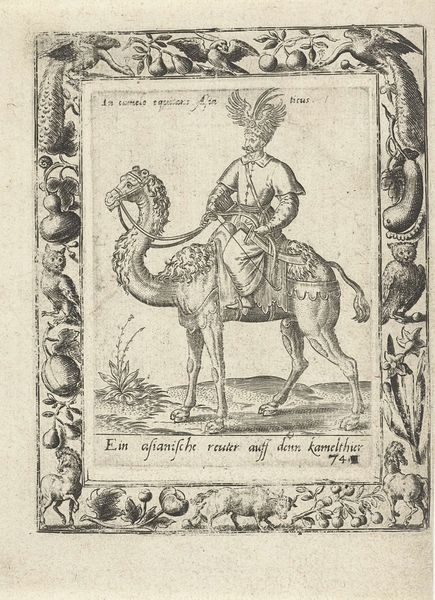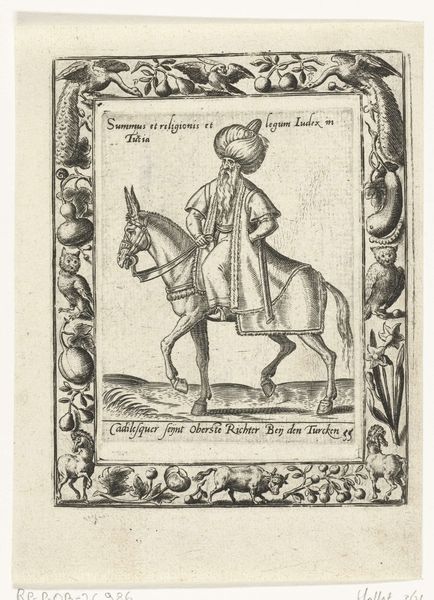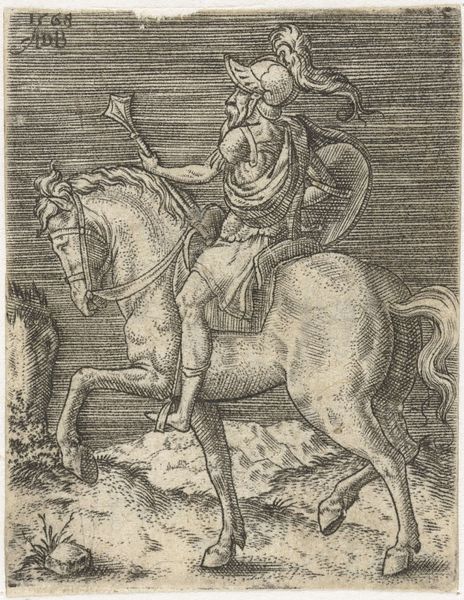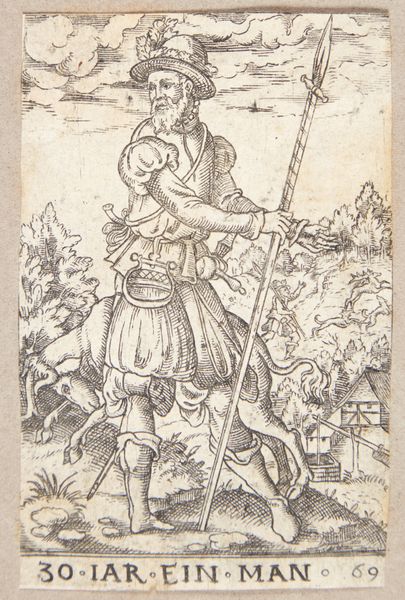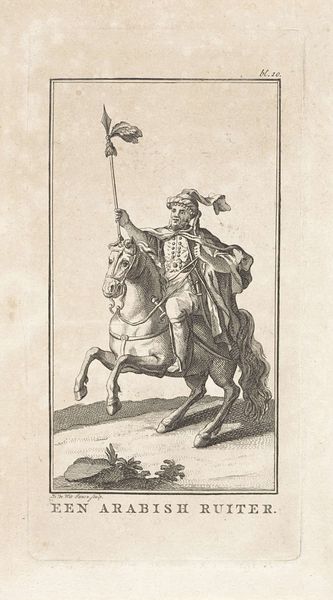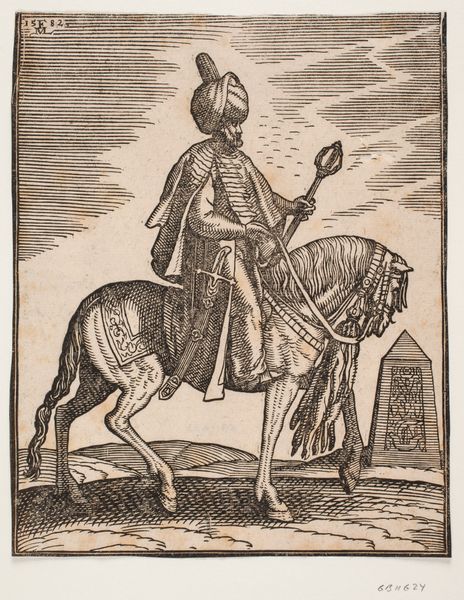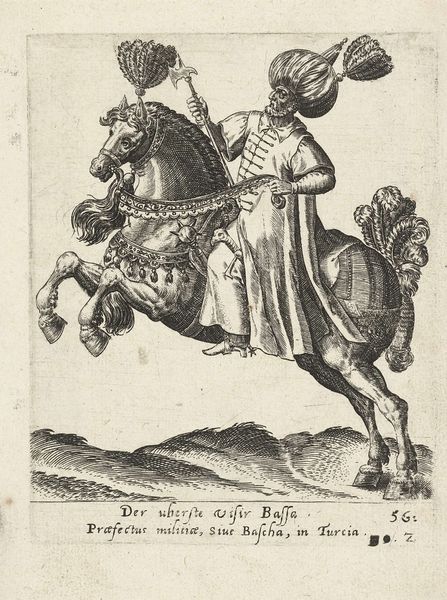
drawing, ink, pen
#
drawing
#
medieval
#
narrative-art
#
pen drawing
#
pen illustration
#
pen sketch
#
landscape
#
figuration
#
ink
#
pen
#
history-painting
#
northern-renaissance
Dimensions: height 168 mm, width 111 mm
Copyright: Rijks Museum: Open Domain
Curator: This little ink drawing, aptly titled "Turkse Ruiter" or "Turkish Rider," dates from between 1488 and 1492 and is attributed to the Master of the Amsterdam Cabinet. What catches your eye first? Editor: Immediately, the cultural dissonance! A figure dressed, well, 'Turkse,' situated so deliberately within what feels like a northern European landscape. What are the power dynamics at play here, who is creating the view of the "other?" Curator: Absolutely. The artist, part of the Northern Renaissance, gives us not just a figure, but also hints at the world outside. A sweeping vista rendered with such delicate pen strokes—almost dreamy. I get lost in the details, like the landscape. It looks like he has places to be, even with his arrow, as if there’s someplace further he will continue traveling. Editor: That "dreamy" quality you describe reads to me as a romanticized orientalism characteristic of the period, though. Notice how his garments and accoutrements appear detailed but maybe slightly inaccurate, leaning into stereotypical exoticism, that is further exoticizing for its original audience and also today's, too. Curator: Fair point! Though, I can't help but admire the intricacy of the pen work, like on the saddle blanket. There's such palpable pleasure in texture, in rendering fabric and foliage, which lends the piece an aura of almost fairytale storytelling, almost naive… even though the man himself is a bit severe-looking. I also get a touch of "The Canterbury Tales," of course! What can that tension show? Editor: It's a clash of civilizations rendered through the biased gaze of the European artist, really. "The Canterbury Tales" presents different, traveling, religious pilgrims. Who might the rider on the landscape become to the inhabitants who may reside there? I'm just cautious about appreciating skill without acknowledging the inherent ideological framework. Curator: So, for you, it’s as much about what we *aren't* seeing as what’s actually present on the paper. Interesting to ponder its context! All things to take note of when looking into history through time. Editor: Precisely. I leave with a greater focus on art as more than aesthetics. Thank you.
Comments
No comments
Be the first to comment and join the conversation on the ultimate creative platform.
